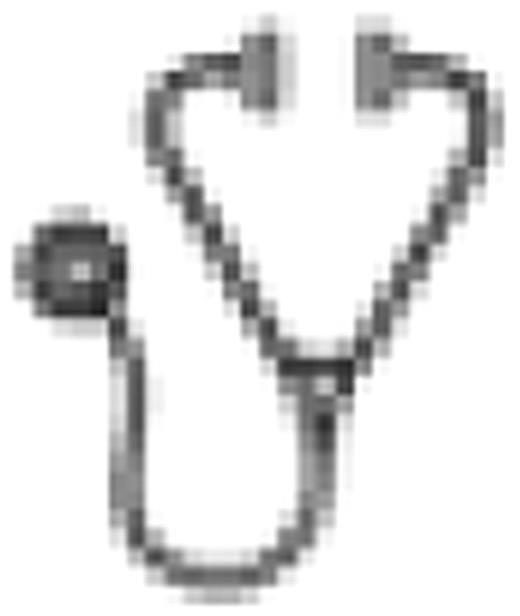Abstract
Sickle cell anemia (SCA) has been associated with impairments in general cognitive functioning as measured by IQ scores and other neurocognitive measures. Children with SCA and overt stroke are the most affected, but those with silent infarcts (SI) on brain magnetic resonance imaging (MRI) also have cognitive impairment. Transcranial doppler ultrasonography (TCD) screening has allowed identification of individuals at high risk for stroke, in whom institution of prophylactic transfusion therapy produces a dramatic reduction in the incidence of primary stroke. Elevated TCD velocities have been reported to predict neurocognitive impairment in patients with SCA. We hypothesize that children with SCA with normal TCD velocities and no overt stroke or SI on brain MRI will have normal cognitive performance when compared with normal-matched controls. We investigated the academic achievement and cognitive function among children with SCA with normal brain MRI and normal TCD velocities, and compared their results with normal age and race matched controls.
School age children with SCA who had normal MRI and TCD exams were evaluated. Controls (classmates and siblings) were matched for race, age, and social-economic status. SCA patients receiving chronic transfusion therapy or with a history of prior overt stroke were not eligible. All participants were followed at Instituto Estadual de Hematologia Arthur de Siqueira Cavalcanti (HEMORIO). All patients and controls underwent MRI examination (to document the absence of stroke and SI) and cognitive testing. In addition, SCA subjects underwent TCD testing and had hematologic laboratory testing. SCA subjects were not experiencing pain or any other complication during study evaluations. The WISC-III was obtained as a measure of intellectual function, and achievement scores in reading, writing, and arithmetic were used to evaluate school performance. Comparisons among patients and controls were made using the Mann-Whitney test. This study was approved by the HEMORIO Ethics committee and all participants signed informed consent.
SCA patients had significantly lower total IQ and academic achievement than healthy controls (Table).
Cognitive function among HbSS and healthy controls.
| Variable . | HbSS with normal MRI and TCD . | Normal Controls . | p-value . |
|---|---|---|---|
| # children | 60 | 41 | – |
| Median Age (range) (years) | 10.3 (8–13) | 10 (8–13) | – |
| Gender (males/females) | 31/29 | 25/16 | – |
| Median TCD velocity (range) (cm/sec) | 120 (80–160) | N/A | – |
| Mean Hb (±1SD) (mg/dL) | 8.4 (1.16) | N/A | – |
| Median total IQ score | 93 | 100 | 0.023 |
| Median Verbal IQ score | 94.28 | 99.89 | 0.153 |
| Median Executive IQ score | 90.91 | 96.50 | 0.11 |
| Median Reading achievement score | 44 | 56 | 0.002 |
| Median Writing achievement score | 16 | 22 | 0.02 |
| Median Arithmetic achievement score | 11 | 15 | 0.011 |
| Variable . | HbSS with normal MRI and TCD . | Normal Controls . | p-value . |
|---|---|---|---|
| # children | 60 | 41 | – |
| Median Age (range) (years) | 10.3 (8–13) | 10 (8–13) | – |
| Gender (males/females) | 31/29 | 25/16 | – |
| Median TCD velocity (range) (cm/sec) | 120 (80–160) | N/A | – |
| Mean Hb (±1SD) (mg/dL) | 8.4 (1.16) | N/A | – |
| Median total IQ score | 93 | 100 | 0.023 |
| Median Verbal IQ score | 94.28 | 99.89 | 0.153 |
| Median Executive IQ score | 90.91 | 96.50 | 0.11 |
| Median Reading achievement score | 44 | 56 | 0.002 |
| Median Writing achievement score | 16 | 22 | 0.02 |
| Median Arithmetic achievement score | 11 | 15 | 0.011 |
This is the first report showing cognitive dysfunction in children with SCA with both normal MRI and TCD examination. Early neurocognitive deficits are known to occur in children with SCA. In general, a patient with SCA in Brazil has a low socioeconomic status, low educational level, and poor access to health services, placing these children at higher risk of neurocognitive complications from the disease. Our study shows that children with SCA perform worse on measures of key cognitive function when compared with healthy matched controls, even without evidence of elevated velocities in the main cerebral arterial vessels or radiological insult to the brain. There was a significant difference in total IQ and school achievement among SCA patients and controls; however this was not true for verbal or executive IQ, suggesting that the cognitive compromise in this population is global. Cognitive dysfunction may occur long before lesions are observed on the MRI (ischemic insult) or on the TCD (vasculopathy), underscoring the need for preemptive screening and treatment of cognitive dysfunction in children with SCA.
Off Label Use: Hydroxyurea for prevention of neuropsychological changes in SCD.

This icon denotes a clinically relevant abstract
Author notes
Asterisk with author names denotes non-ASH members.

This feature is available to Subscribers Only
Sign In or Create an Account Close Modal